Snail Kites, formerly known as Apple or Everglades Snail Kites, are an extremely specialized bird. These are some of the most endangered raptors in North America, but now that the Florida, South American, and Caribbean populations have been lumped into one overarching species they are internationally listed as least concerned, while the Florida and United States governments continue to have it listed as an endangered species with around 400 breeding pairs.
Their diet is almost entirely based on Apple Snails, and this specialization has given them some amazing adaptations! Their long, sharp talons accurately pluck the snail out of the shallow water, and thin, curved mandible (upper bill) to reach around the bend of the shell to collect the meat.
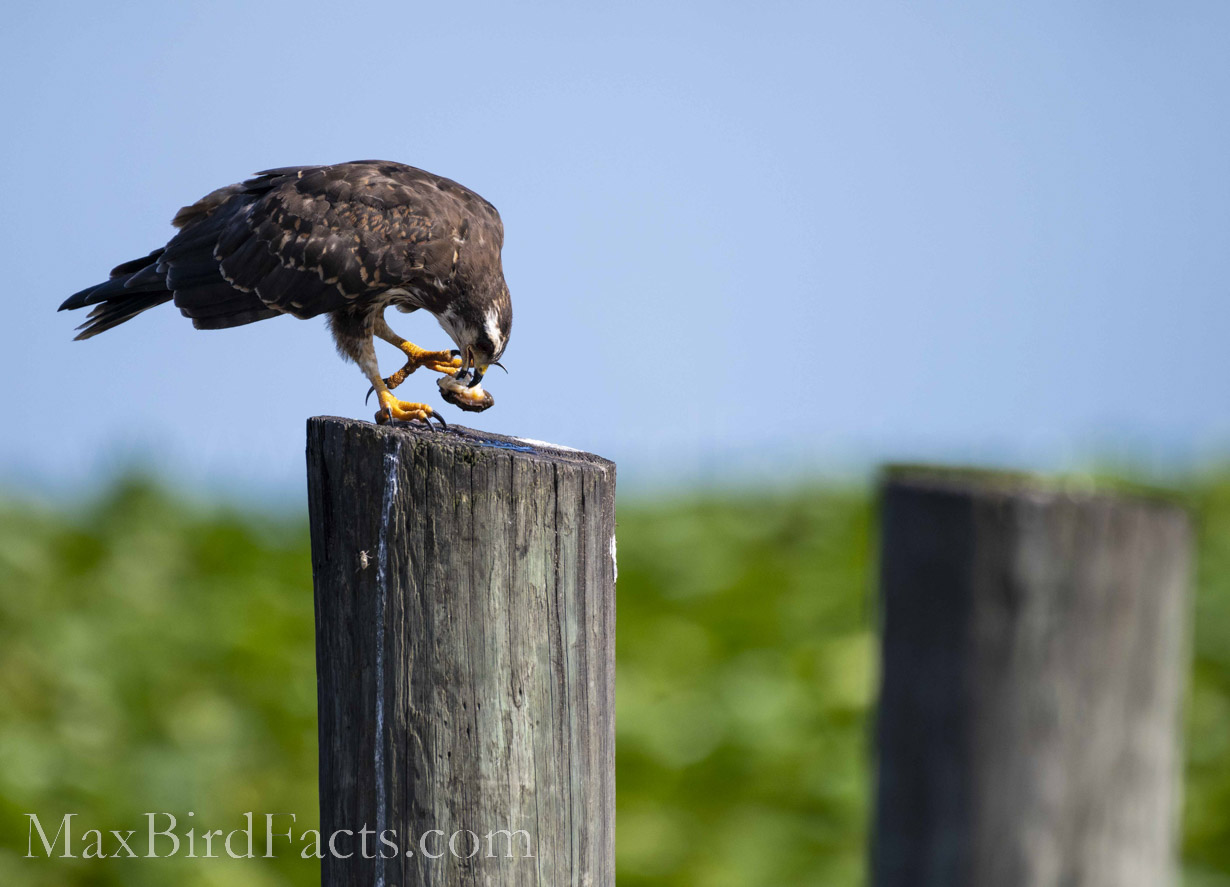
Apple Snails of Florida
The native Florida Apple Snail is a staple food for some animals like the Limpkin and Snail Kite, but due to changing environments from human expansion, the native populations of these snails are on the decline.
These snails thrive in the shallow, slow-moving freshwaters of South Florida, and one of their historic strongholds was the Everglades. With the increased development in the areas surrounding the Everglades, ecosystems that used to be ideal for the snails are now either drained of water or flooded to fit the needs of their human neighbors.
This change in the local environment caused a sharp decrease in the population of the native snails, and this put pressure on the species that hunt them. Alongside this habitat loss also came the invasion of their South American cousins.
Four invasive Apple Snail species (Island, Channel, Spike-topped, and Titan) were introduced and became established in Florida around 2010. More than likely these snails were introduced due to the aquarium trade, like many other invasives, when they are released without considering how they might impact the environment. Like many invasive species, these snails are larger, less picky with where they can reside, are more aggressive, and reproduce more rapidly and numerously than their native relative.
There is still a lot of ongoing research on the effect of these invasive snails, but it seems to be a net positive for the Snail Kites. Since the establishment of the invasives, there has also been an increase in Florida Snail Kite populations. There is still some concern for long-lasting effects on the birds and if they will be able to fully adapt to this new food source if they outcompete the Florida Apple Snails.
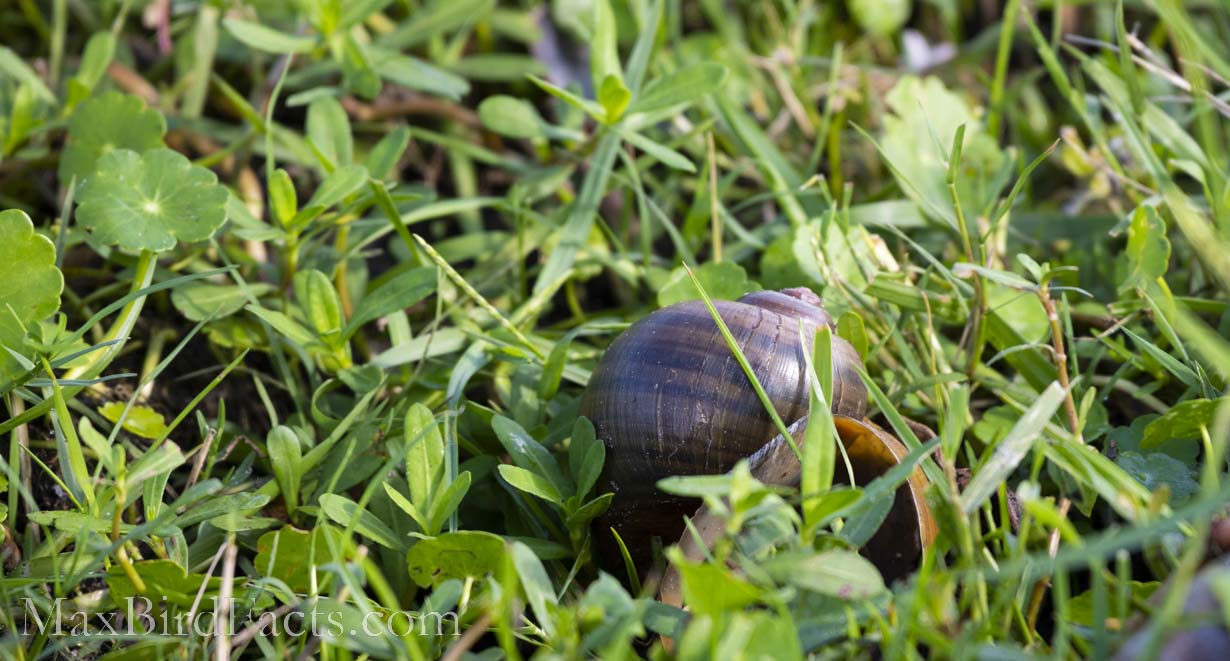
Florida Snail Kites Now
The loss of their primary food source forced the Florida population of Snail Kites to add other prey items to their diet, such as crayfish and other invertebrates. But the loss of Florida Apple Snails, and the reduction of their preferred ecosystem in the Everglades, forced some of these birds to seek out new territories.
Central Florida has become a new hot zone for the Florida Snail Kites, with vast wetlands and shallow lakesides that seemed to fit the invasive snails’ needs perfectly, and this is exactly what the kites need.
The nesting behavior of these birds has been focused on extensively for nearly half a century now, and scientists found a very strong correlation between water levels and fledgling success. In 1974 there was a drought that caused just a 17% success rate with Everglades Snail Kite nests, but in 1984 when all the conditions were perfect for these birds they had a 90% success rate.
Currently, they are averaging about a 40% success rate with fledglings, and this is one of the reasons their population has not recovered as quickly as other birds of prey like the Bald Eagle and Peregrine Falcon. The reason these other raptors recovered so well from their decline, due to DDT and other pesticides, is because they are more generalized in their diet and more flexible with what habitats they can exploit.
Bald Eagles are well known for their ability to consume carrion as well as very successfully hunt fish, small to medium-sized mammals. Eagles also have more generalized equipment to fit this diet: strong, stout talons to latch onto and hold strong prey, and a broad, sharp beak to tear off chunks of flesh from larger prey they might scavenge but can still work perfectly well on smaller prey items.
Peregrine Falcons are bird hunters, but they have not specialized in any specific bird to hunt. Their preferred prey is waterfowl, and they will migrate with their prey, hunting, and nesting in relatively similar areas to them throughout the year. But some populations of these falcons were able to adapt and use the cities to their advantage. Instead of perching on cliff-sides, they perched on windowsills of skyscrapers. They also switched to preying upon the pigeons that infest the cities, giving them more than enough food to feed their young and help them fledge.
As I stated earlier, Snail Kites are extremely specialized for the prey they hunt. Their grip is not very strong so they might not be able to hold onto a slippery fish or a struggling squirrel. The extreme curvature of their bill might make it hard to grab and tear at meat from a larger animal. But those adaptations aren’t for catching fish or eating roadkill, it’s specific to catching and consuming Apple Snails.
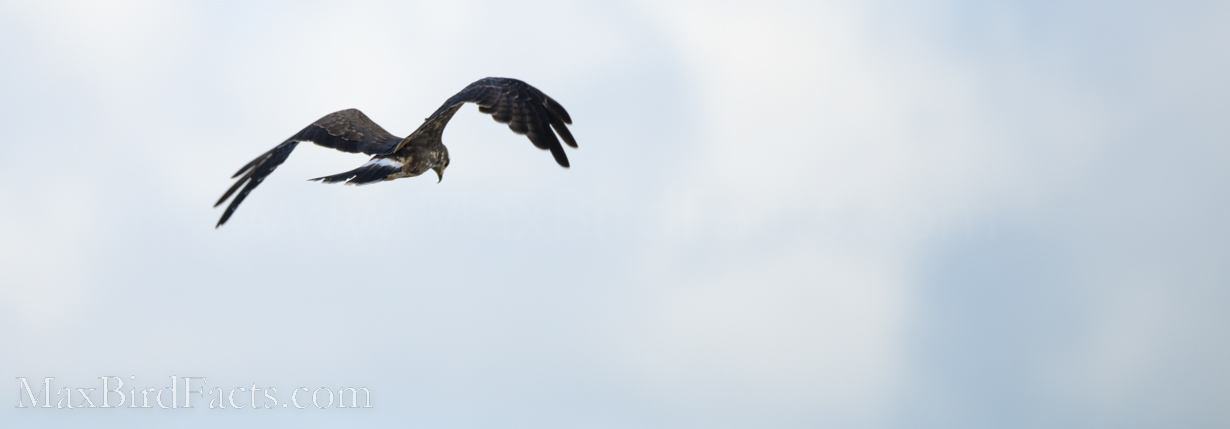
Observing this Kite
When I got to the dock, the first thing I did was scan the horizon and treetops to see if there were any birds perched or soaring. These birds will fly over the water, looking straight down, and can even hover nearly motionless while they search for their prey at or just under the surface of the water.
The female I was watching would do this behavior after sitting on an “Idle Speed” sign for about 10-15 minutes to build up her energy before taking off again. This kite would take off and fly over to the boat dock, where she would hover above the water and sometimes swoop down to get a closer look. If she didn’t catch anything, she would continue around the perimeter of the lake for roughly a mile and a half before circling back, flying over the water, and perching back on the sign to rest again.
It seemed like she wasn’t in any real rush, which makes sense because her prey can’t flee very quickly. After the third flight I watched, she swooped down out of my line of sight and when she climbed back up I could see there was something in her talons, and it was clear she finally caught a snail.
Here’s a little break from all the text, enjoy the following images of this beautiful bird doing what it naturally does best, eating Apple Snails. Each image has a short description of what was being observed at the time it was photographed.
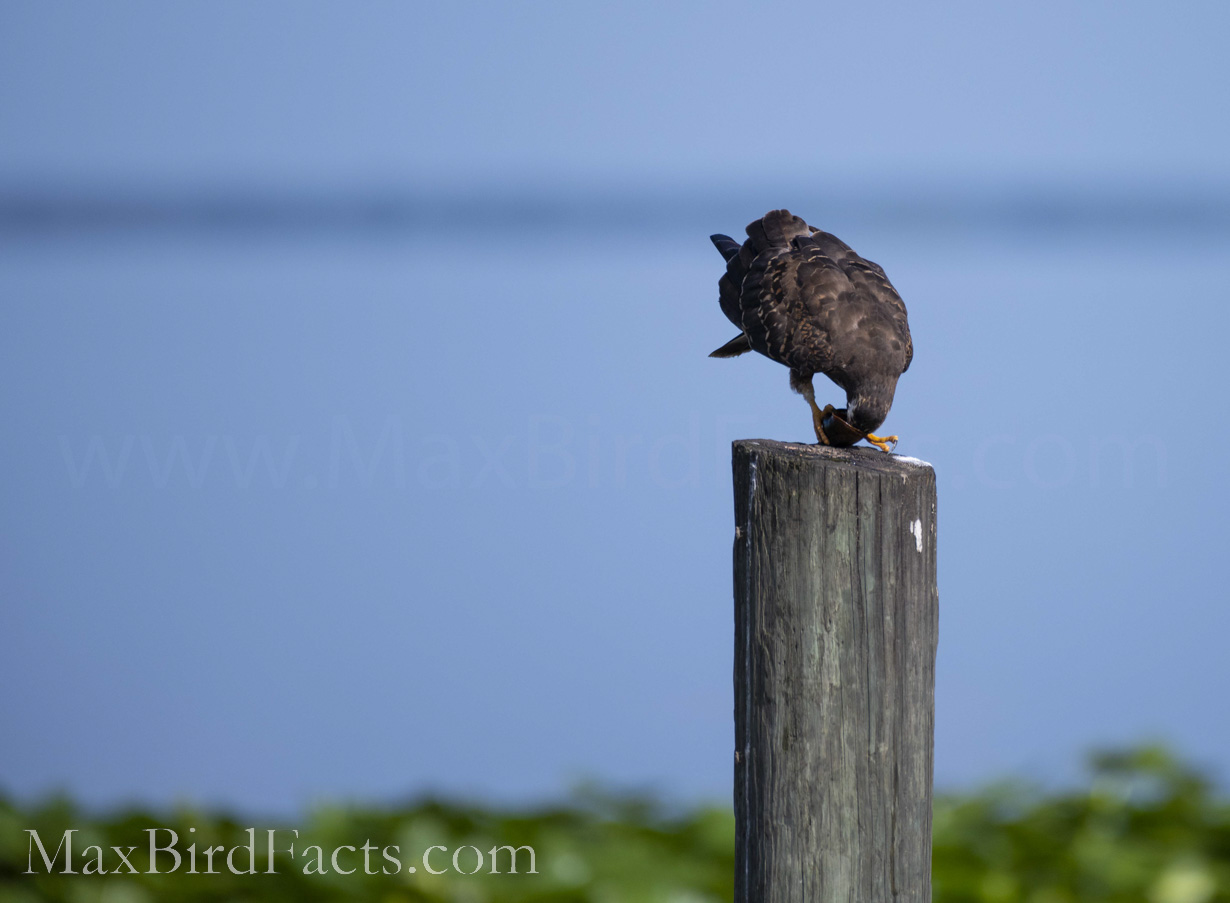
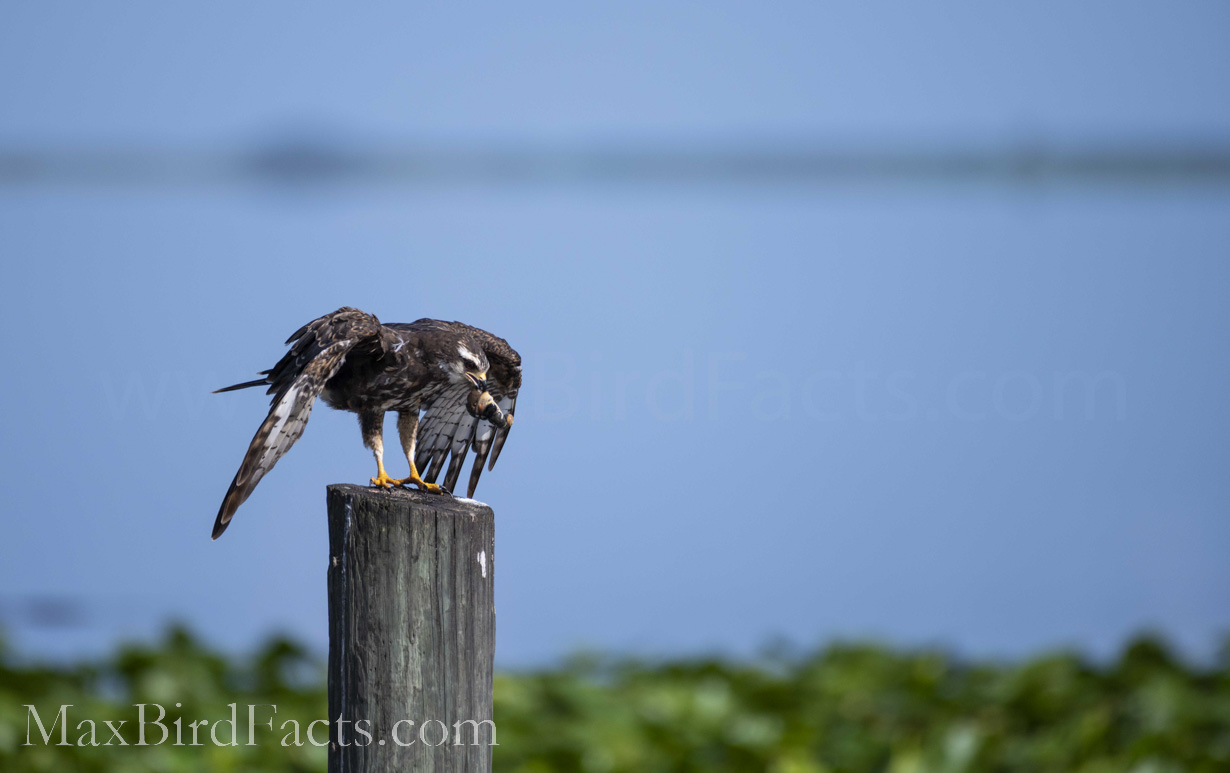
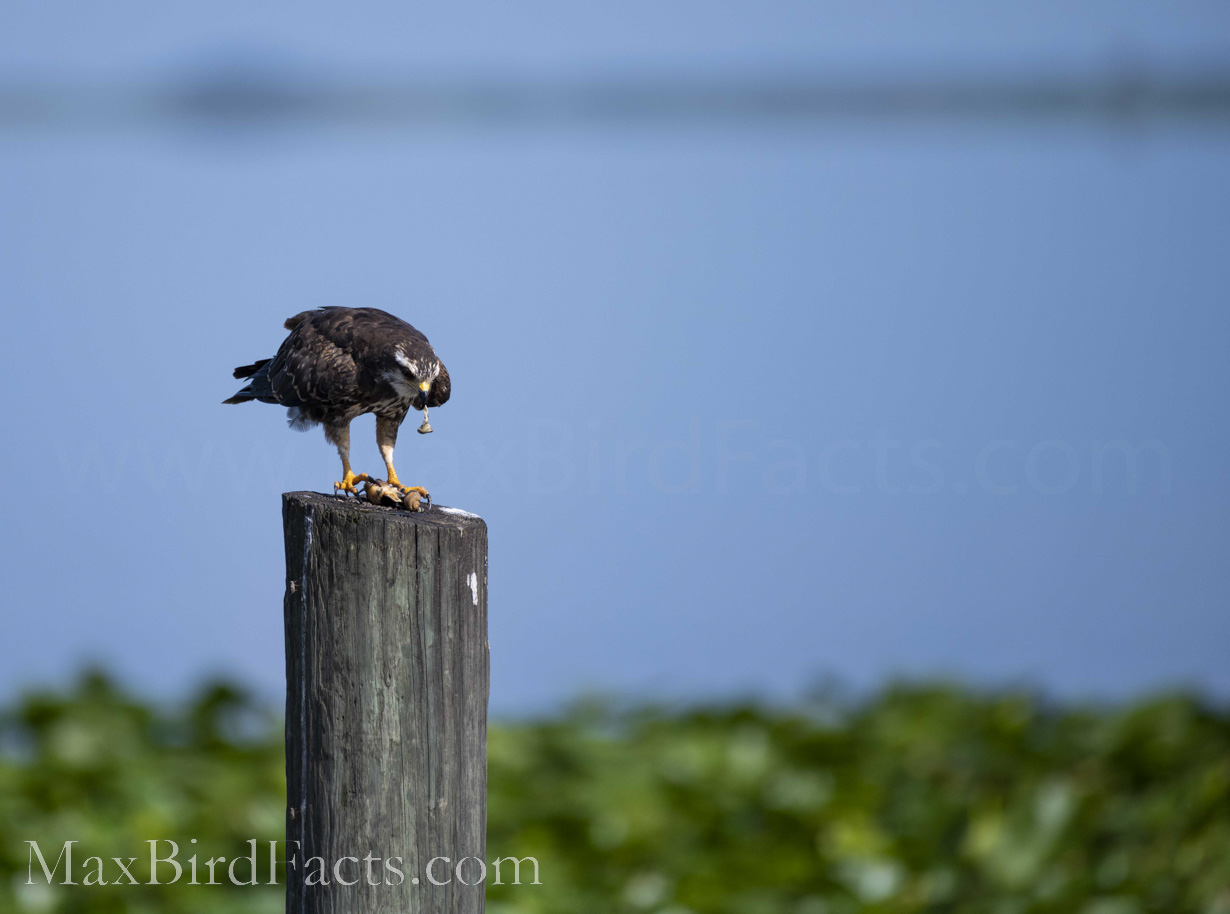
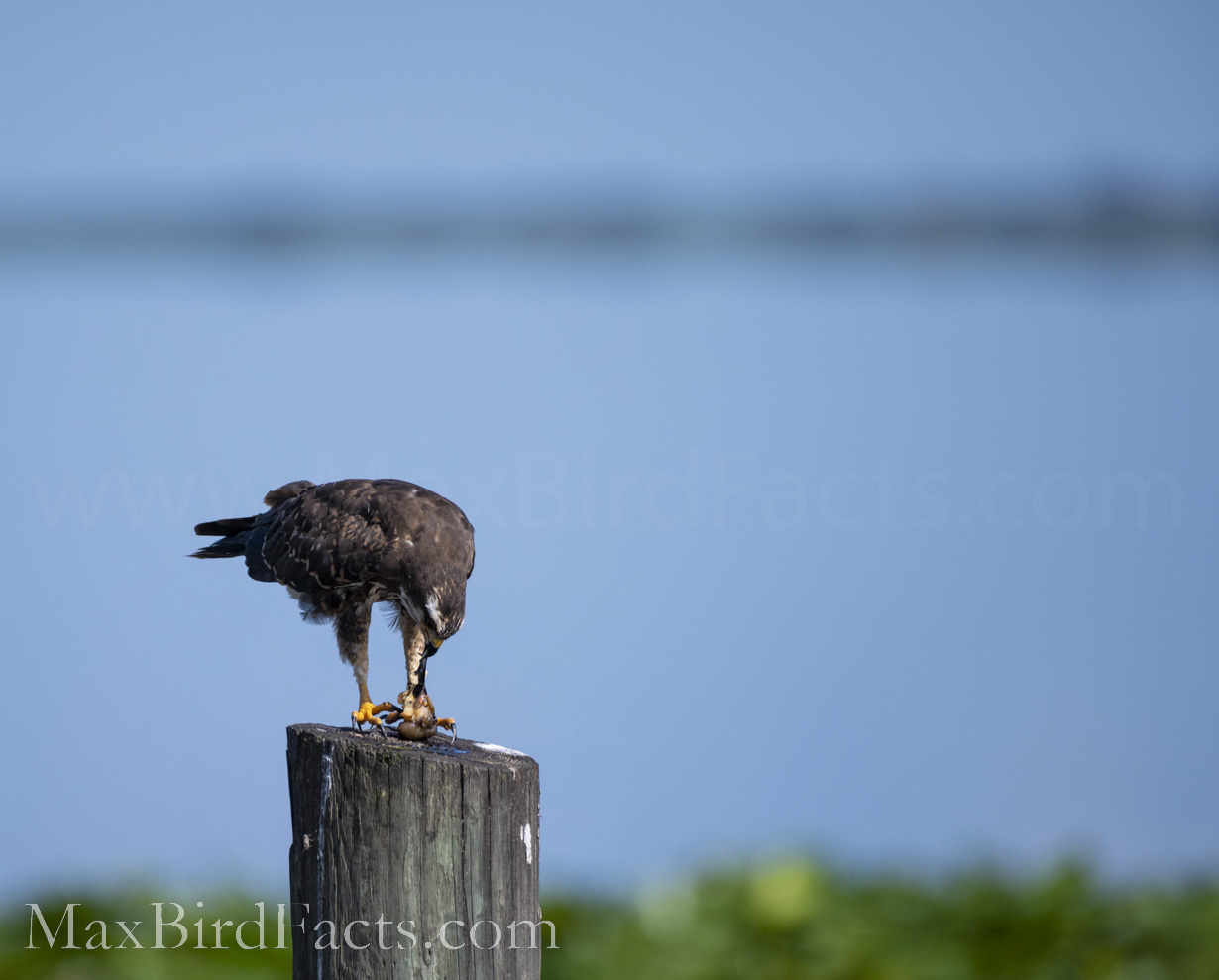
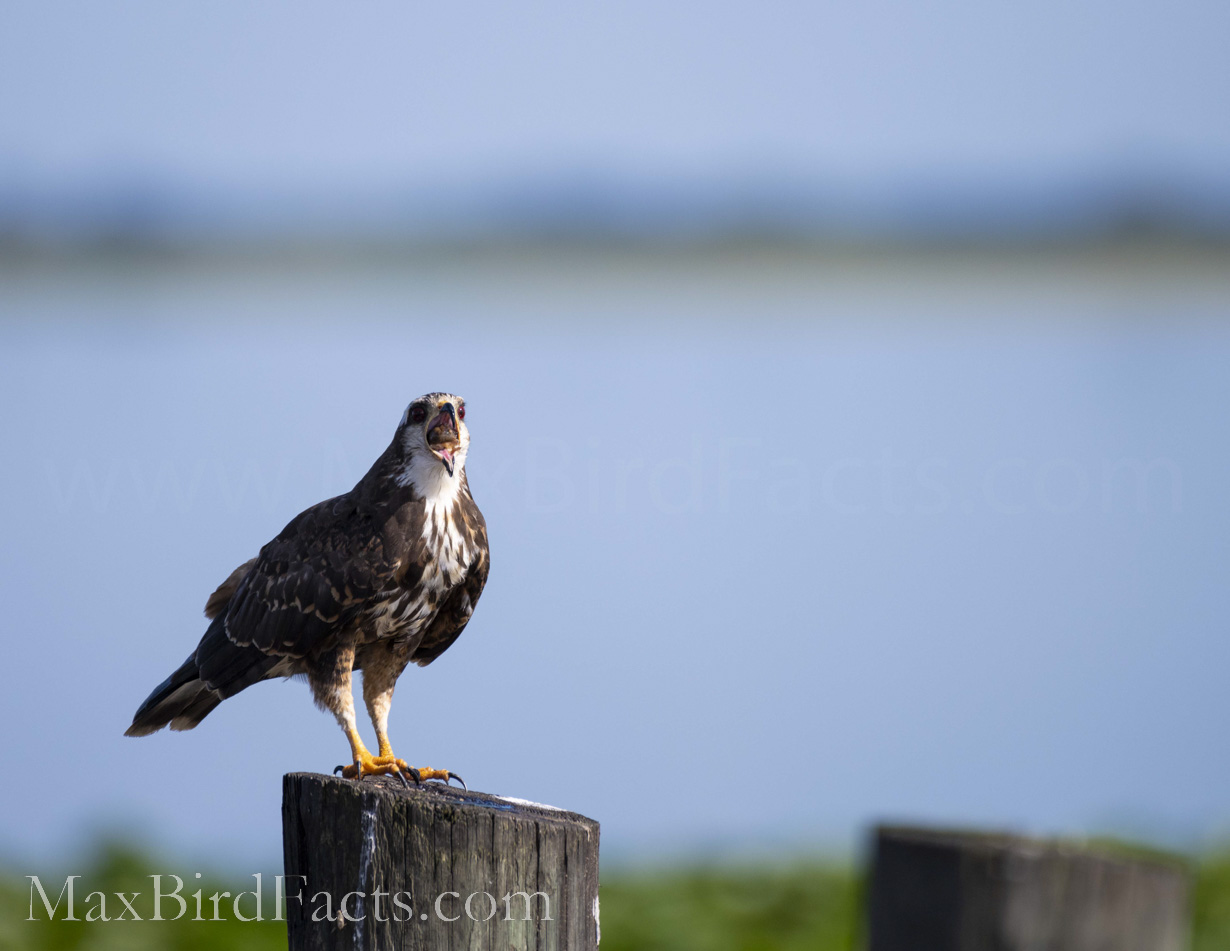
Are the Invasive Apple Snails Helping?
This is an ongoing debate if the invasive Apple Snail species are helping the Snail Kites, or if they will be more harmful to the rest of the environment they are encroaching on. Since these nonnative species are less specific with the environment they can habitate, they spread over a larger area and into ecosystems the native Florida Apple Snail had never existed.
This expansion allowed the Snail Kite to also expand their range in Florida and reduce the stress and pressure on a shrinking South Florida territory. This opened their range to an off-lake wetland environment, which is what we see here in Central Florida. This ecosystem is described as fairly still water in a vegetated area that is partially submerged, perfect for a herbivorous mollusk.
Since these raptors are classified as the same species as the Snail Kites of South America, where these invasive snails are from, it shouldn’t be surprising that these birds can easily adapt to hunt them. There is even evidence that the curvature of the beak on these birds has been increasing due to them feeding on the larger invasive snails more and more!
The larger shell of these snails is more easily defeated by a more drastically curved beak, this is a beautiful example of an animal adapting to their new situation. Since the population of Snail Kites is so small in Florida, the changes and adaptations that give these animals a higher fitness can be seen more quickly and become more common in the population, and hopefully give the population as a whole a better chance of recovery.
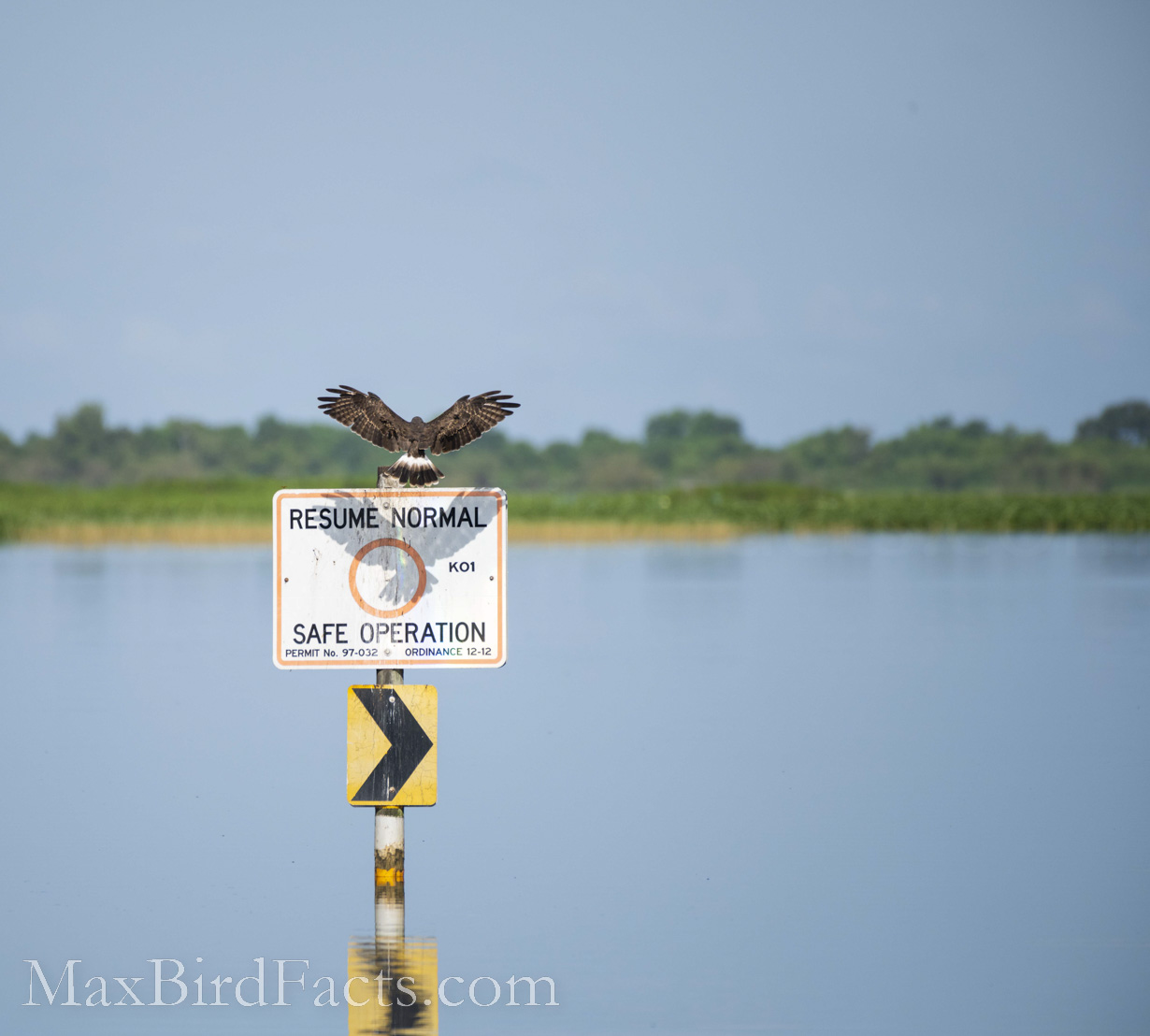
Then the question comes to how these invasive snails will affect the native ecosystems? The South American snails have a much more voracious appetite and reproduce in nearly half the time the native snails do with up to ten times the number of offspring. This can lead to the invasives outnumbering the Florida Apple Snails, and eventually pushing them out of their habitat. The spread of these snails to new areas, like Central Florida, also has an effect on the ecosystems that haven’t really seen these animals before, and definitely not in these numbers.
These invasive snails feed on vegetation, and even native snails’ eggs, this will cause an increase in nitrogen levels in the water through their feces. Increased nitrogen as a nutrient in the water almost always leads to an algal bloom, reducing the oxygen in the water and choking out other aquatic life.
Thankfully Snail Kites and Limpkins have adapted to hunt these nonnatives, and this, along with work humans are conducting to try to restrict the spread of the invasive species, can help keep these snails in check.
This situation seems to be a double-edged sword, an invasive species of Apple Snail threatens to out-compete a native species while these invasive snails are helping to bring back an extremely small population of specialized raptors from the brink.
Only time will tell what the final outcome will be for these animals, but so far the future of these birds is looking bright!
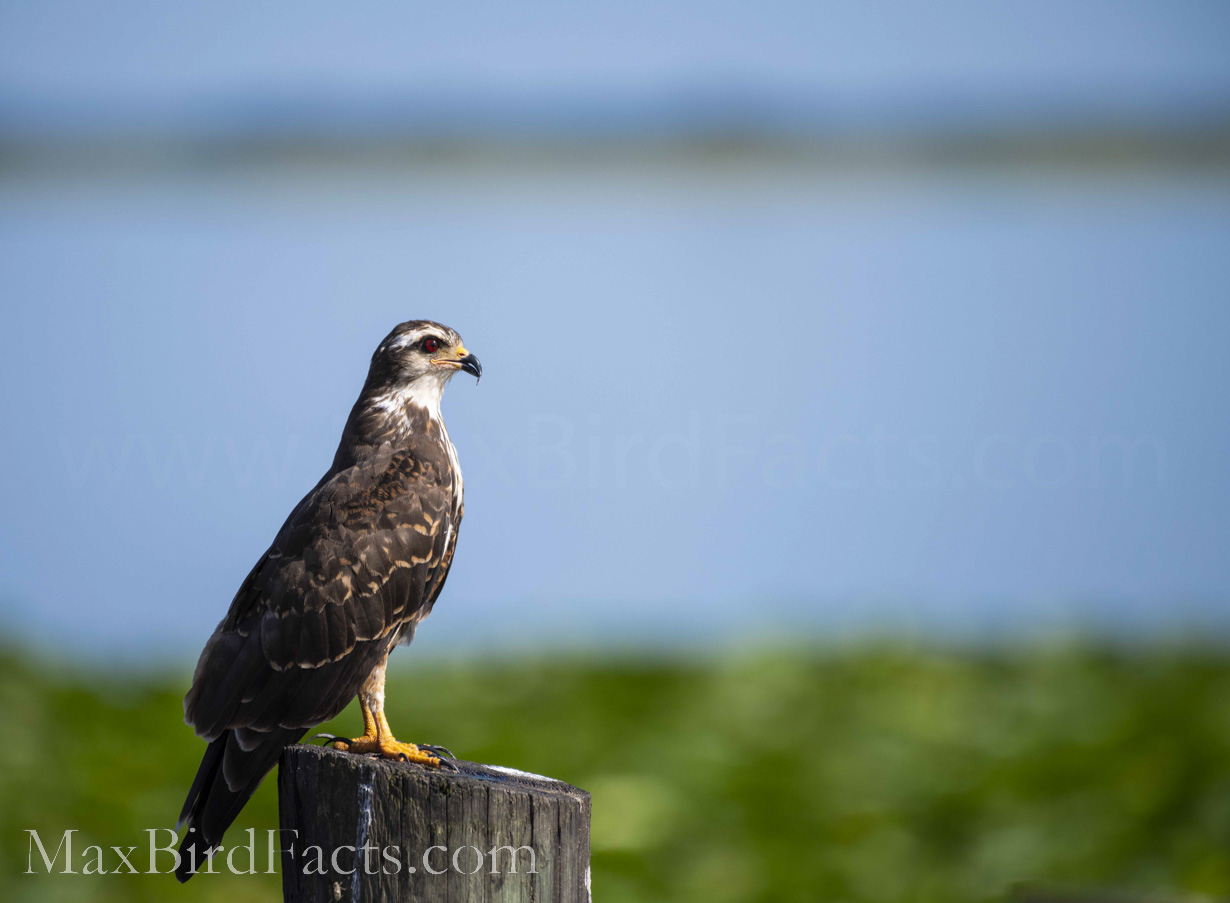
References
Fagenson, Zachary. “Invasive Apple Snail Threatens Florida Everglades Clean Up.” Reuters, Thomson Reuters, 29 Sept. 2014, www.reuters.com/article/us-usa-florida-snails/invasive-apple-snail-threatens-florida-everglades-clean-up-idUSKCN0HO2EF20140929.
Fletcher, Robert. “An Invasive Prey and the Beak of the Kite.” Nature Research Ecology & Evolution, Nature Publishing Group, 27 Nov. 2017, natureecoevocommunity.nature.com/posts/24716-an-invasive-prey-and-the-beak-of-the-kite.
“Florida’s Apple Snails.” Florida Fish And Wildlife Conservation Commission, 2019, myfwc.com/research/freshwater/species-assessments/mollusks/apple-snails/.
“Invasive Species Highlight: Apple Snails.” SOLitude Lake Management: Full-Service Lake And Pond Management, SOLitude Lake Management, 7 June 2018, www.solitudelakemanagement.com/blog/invasive-species-highlight-apple-snails.
Kaufman, Kenn. “Snail Kite.” Audubon Field Guide, 15 Jan. 2020, www.audubon.org/field-guide/bird/snail-kite.
Rogers, Nala. “Invasive Snails Rescue Endangered Bird of Prey.” THE WILDLIFE SOCIETY, 11 Oct. 2016, wildlife.org/invasive-snails-rescue-endangered-bird-of-prey/.
“Snail Kite Overview.” All About Birds, 2019, www.allaboutbirds.org/guide/Snail_Kite/overview.
“Snail Kite: Species Profile.” National Parks Service, U.S. Department of the Interior, 17 Oct. 2017, www.nps.gov/ever/learn/nature/snailkite.htm.

Pingback: What Do Limpkins Eat – Diet Of The Crying Bird – Welcome to MaxBirdFacts.com!!!
Pingback: Bird Beaks Part 2: The Different Beaks of Hawk-like Raptors (Accipitriformes) – Welcome to MaxBirdFacts.com!!!